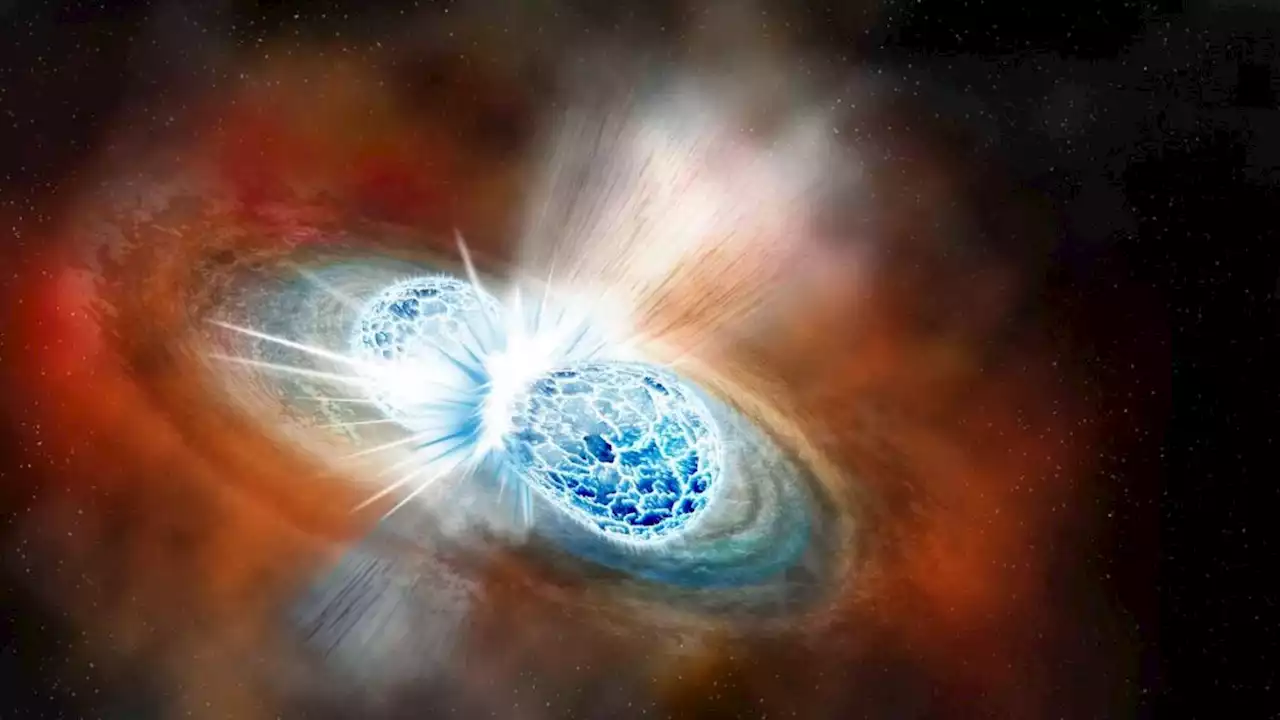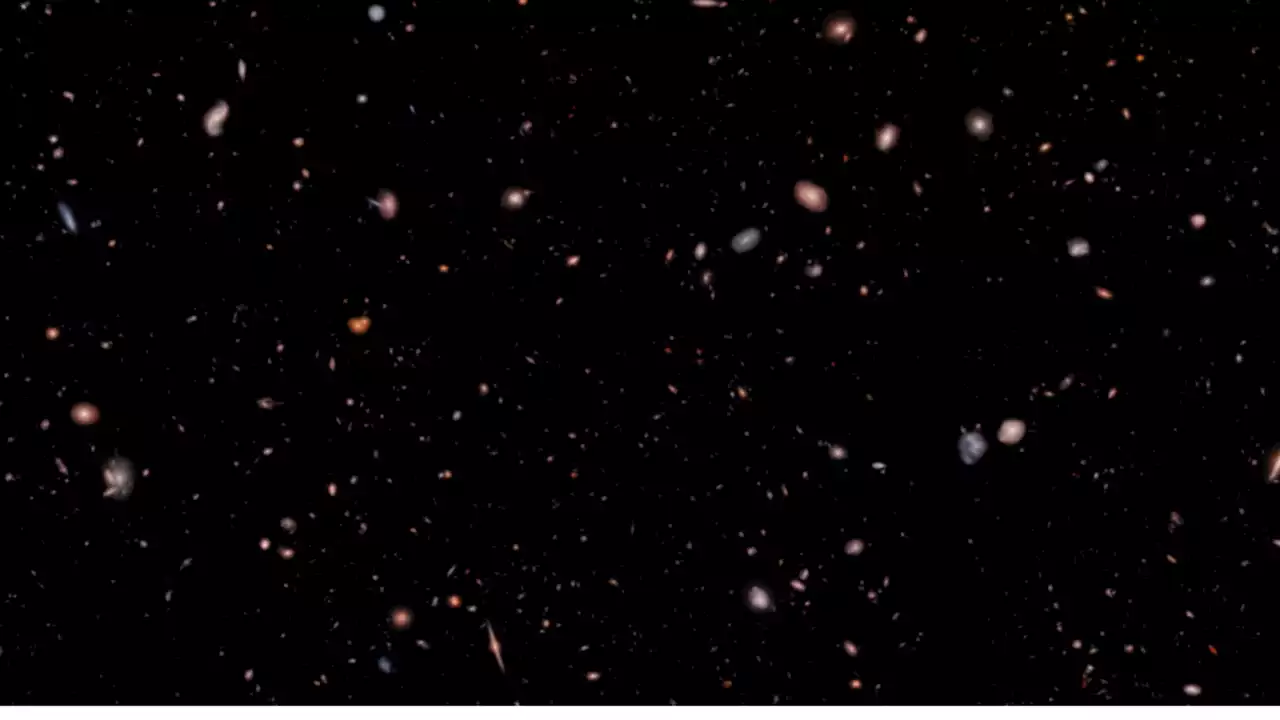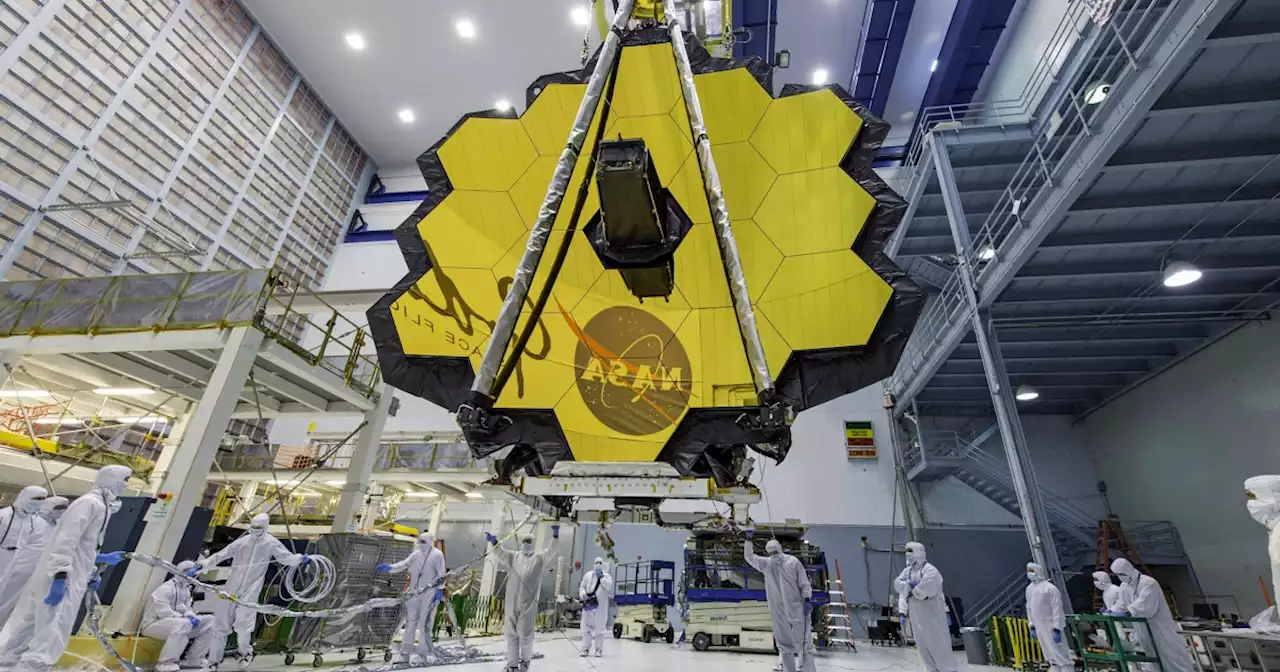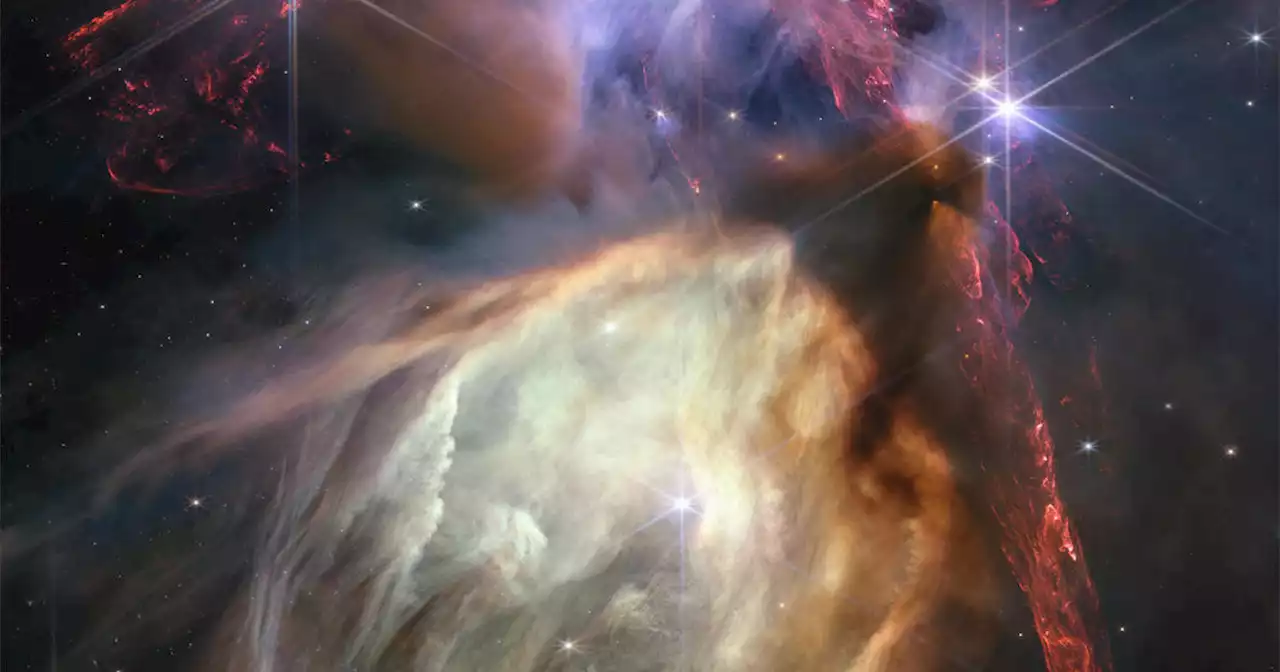The stellar nursery in the Rho Ophiuchi cloud complex features about 50 young stars, all similar to Earth's sun or smaller.
NASA celebrated the first year of science observations with the James Webb Space Telescope with a new image showing a stellar nursery where about 50 young sun-like stars are lighting up the interstellar medium. Click here for a zoomable image.
It took a month for the telescope to reach its planned parking place a million miles from Earth on the far side of the moon's orbit — Lagrange Point 2 — where it now circles the sun in gravitational lockstep with Earth, providing the cold, dark environment needed for mission success. The telescope and its four instruments are optimized to capture light from the first stars and galaxies that began shining in the aftermath of the Big Bang birth of the cosmos, light that has been stretched into the infrared region of the spectrum by the expansion of space itself over the past 13.8 billion years.
The telescope's sheer complexity prompted widespread tension among the astronomical community. But six-and-a-half months after launch, Webb was fully calibrated and operating as designed. NASA was able to release, that clearly demonstrated the enormous power of the most expensive science probe ever built.
Brasil Últimas Notícias, Brasil Manchetes
Similar News:Você também pode ler notícias semelhantes a esta que coletamos de outras fontes de notícias.
 James Webb Space Telescope spots violent collision between neutron starsThe telescope traced an incredibly bright gamma-ray burst to a kilonova, a dramatic event believed to forge heavy elements like gold.
James Webb Space Telescope spots violent collision between neutron starsThe telescope traced an incredibly bright gamma-ray burst to a kilonova, a dramatic event believed to forge heavy elements like gold.
Consulte Mais informação »
 James Webb Space Telescope time travels billions of years in amazing 3D visualization (video)The first data release from the CEERS survey features a region known as the Extended Groth Strip and sends viewers back to shortly after the Big Bang.
James Webb Space Telescope time travels billions of years in amazing 3D visualization (video)The first data release from the CEERS survey features a region known as the Extended Groth Strip and sends viewers back to shortly after the Big Bang.
Consulte Mais informação »
 James Webb Space Telescope observes massive kilonova explosion for first timeThe galaxy identified as the brightest, and thus the most probable location of this explosion, is situated approximately 8.3 million light-years away from Earth.
James Webb Space Telescope observes massive kilonova explosion for first timeThe galaxy identified as the brightest, and thus the most probable location of this explosion, is situated approximately 8.3 million light-years away from Earth.
Consulte Mais informação »
 Webb Space Telescope spots most distant black hole yet — and more may be lurkingDetected in February, this particular black hole is active and actually puny as they go — equivalent to about 9 million times the mass of our sun.
Webb Space Telescope spots most distant black hole yet — and more may be lurkingDetected in February, this particular black hole is active and actually puny as they go — equivalent to about 9 million times the mass of our sun.
Consulte Mais informação »
 Webb Space Telescope reveals moment of stellar birth, dramatic close-up of 50 baby starsThe Webb Space Telescope is marking one year of cosmic photographs with one of its best yet
Webb Space Telescope reveals moment of stellar birth, dramatic close-up of 50 baby starsThe Webb Space Telescope is marking one year of cosmic photographs with one of its best yet
Consulte Mais informação »
